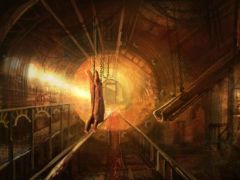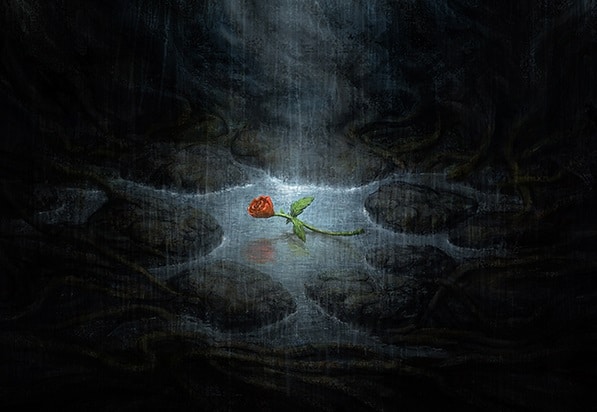You can trust VideoGamer. Our team of gaming experts spend hours testing and reviewing the latest games, to ensure you're reading the most comprehensive guide possible. Rest assured, all imagery and advice is unique and original. Check out how we test and review games here
They don’t make horror games like they used to. That’s the consensus, anyway. Since Resident Evil veered towards action-centric gunplay, and Silent Hill headed in the direction of often being a bit rubbish, those craving their frightening fixes have been left in the lurch. As tense and dramatic as the likes of Dead Space are, there’s a common feeling running through the hearts and minds of so many horror fans: these games just aren’t so scary any more.
It’s the feeling of vulnerability that’s been lost. Traditional survival horror titles challenged players with limited ammo and health resources, and used tight camera angles and limiting controls to put you on the back foot.
Recently, Capcom explained its change in focus for Resident Evil, and it’s what everyone assumed: traditional horror games simply don’t sell in big enough numbers to make them worthwhile. But where companies like Capcom need their games to sell in the millions, there are studios for whom these sorts of figures aren’t the be-all and end-all: the indie developers.
So, could indie be the future of survival horror? The critical success of recent side-scrolling scare-’em-up Lone Survivor might suggest so.
Wearing its influences proudly on its pixelated little sleeves – Silent Hill 2, Twin Peaks, Deadly Premonition – it delivers a chilling few hours of thorough weirdness. It’s also an exceptionally complex game, which asks you to manage not only your resources and health, but also your hunger, fatigue and psychological stability. All the while, you’re working to understand the game’s many systems, and how they interact with one another.
At times it’s properly frightening, its hideous, indistinct beasts getting the heart racing every time they appear. Oddly enough, creating an atmosphere of full-blown terror wasn’t at the top of creator Jasper Byrne’s priority list. “Even though I’m pleased that’s been a side-effect, it wasn’t really what I set out to do,” he explains. “It’s definitely not a visceral thriller along the lines of Siren or Amnesia: The Dark Descent. I think, more than anything, I was trying to write something that was adult in its themes, personal, and possibly even philosophical – perhaps something more grounded in reality than we normally expect in games, despite the use of hallucinations and dream logic. Maybe that’s why it’s frightening.”
It’s Lone Survivor’s willingness to experiment with these sorts of ideas that sets it apart from the crowd of action-centric titles that dominate the current horror market. Could this be how indie games will save survival horror?
It was the removal of any combat whatsoever from Frictional Games’ Amnesia: The Dark Descent that made it such a relentlessly terrifying experience. In Amnesia, your only escape from the monsters was to hide in the corner, face pressed against the wall, hoping they’d get bored of searching before they found you.
“The genre has a rich history of breaking normal design rules, focusing more on creating a certain experience and evoking emotions than trying to simply be a ‘fun’ pastime,” says studio founder Thomas Grip. “This means that it is much easier to have a commercially viable game and yet be very successful.”
If this is the case, though, why has survival horror failed its fans? If commercial viability is possible even with an experimental title, is it really just the lack of an audience that has stopped the major studios from heading down the route of true terror?
Dan Pinchbeck – creative director at thechineseroom, who are heading up development on Amnesia’s successor, A Machine for Pigs – is somewhat baffled by the situation. “I don’t think people’s obsession with horror is going anywhere,” he says, “and the fit with games is just perfect, because in a game you have these hard perceptual limits of what can be seen and heard, and you have this sense of immersion, so it feels really immediate and like it’s happening to you. It’s just a total winner, which does make it kind of strange to me that horror games morphed into action games, really.”
Perhaps it is a financial issue, but not in the way we might think. “The thing with horror is that, if you repeat a situation over and over again, it gets less scary,” Pinchbeck muses. “In an action game, you can iterate on a basic format – like Uncharted 2 defaults back to arena shootouts – and then you can recycle essentially the same gameplay with a few tweaks here and there.”
In horror, says Pinchbeck, this doesn’t work: the minute you take a situation and repeat it, you’re no longer afraid, because you’ve seen it all before.
“Ideally, in a really scary game, you never work out the optimum solutions,” he says. “You never get to apply previous knowledge to a new situation, so you’re always on the back foot. When you have this established as the central experience then you can really play with people’s heads, which is the big draw for a horror experience… but it’s expensive, because you can’t use those defaults.”
So why does it seem like we’re seeing an indie revival? Games like Lone Survivor are clearly as low-budget as they come, and even Amnesia owes a lot to the Penumbra series, which Frictional made on shoestring funding. Indeed, even the tiniest of developers are giving horror a go: Room 502 is the first title from Mad House Interactive, who are setting out to make a game in their spare time “just for the fun of it.” Set in the Waverly Hills Sanitorium, an infamous (and thankfully closed) mental health institution that’s alleged to be among the most haunted buildings in the world, Room 502 seeks to go back to a time when ‘horror’ meant something.
“We’re not focusing on the hack-‘n’-slash side of things,” says Mad House’s Tristan Woodington. “Although there is killing, gore and very gruesome things involved, we try not to make that the main point. We’re going for what we’ve slightly forgotten over the years.” Woodington thinks more resources need to be poured into getting the atmosphere right, but why is it that some of the most effective horror games in recent memory have come out of the indie scene, rather than the studios with the big budgets?
“Well, there’s nothing indie developers can do that the major studios can’t,” he says. “But it’s what indie developers will do that makes the difference. Lots of indies try new things – they don’t always go with the popular options, or the things that will make the most money. We will experiment, try new things, and try to make games different from each other.”
Interestingly, considering people’s cries that they don’t make survival horror games like they used to, it seems that indie developers might save the genre by changing it.
For Lone Survivor’s Jasper Byrne, this is crucial – especially in a thematic sense. “I want to play not just great horror games, but games about normal everyday life that actually have something interesting to say – games about gang life or drug use that are as well-written as the great movies on the subject, music games about actually being a struggling musician or fighting writers’ block, games about falling in love, or jealousy destroying someone’s life, or the terrors of house-sharing, or playing the stock market and the dark side of it… I’m rambling now, but I guess what I’m saying is horror is just a nice channel where it’s acceptable to explore some of these themes, under the camouflage of being a zombie game or whatever.”
/https://oimg.videogamer.com/images/9da0/pigscropped.jpg)
For Frictional’s Thomas Grip, despite the recent indie trend towards horror, the genre still needs to evolve more – and more people, especially indies, need to take the plunge if that’s to happen. “The bar was really raised with games like Silent Hill, Fatal Frame and Forbidden Siren ten years ago, but there hasn’t really been an improvement since then. I think the games I mentioned come from the best use of the video games medium, so it’s quite sad to see that the genre has stagnated then.”
Grip thinks horror games need to take more advantage of the inherent interactivity and immersion that gaming brings to the fiction it presents. “I like to think that we’ve at least evolved the genre a bit with Amnesia,” he says, “but in general horror game output from indies has been meagre at best. There is a bit of a positive trend going on right now, though – I hope it’ll raise the bar for horror games once again.”
For Dan Pinchbeck, working with the limited resources of an indie company is actually the drive needed to make something truly scary. “We can’t afford rolling, complex gameplay like a AAA unless we’re doing a whole retro thing,” he explains, “so you have to find other ways of delivering a highly charged experience without having a ton of weapons, art, monsters etc. You’re always working in a tightly defined space and trying to wring every last drop of impact from the resources you have.”
And the fundamental rules of the horror genre conveniently gel with this approach, says Pinchbeck.
“The player can always imagine something scarier than you can show. Cool, I don’t have to show things, and they’re scarier! Excellent – invisible water monsters, here we come! And space, time, vacuums, they all lend themselves well to horror too. So I think maybe the fact we can’t actually make those large-scale things means we have to focus on that moment-by-moment thing. And I certainly think Frictional and us, we share that obsession with psychology, reality, and that I do think lends itself better to smaller productions. It’s why, for me, Amnesia is a far more frightening game than Alan Wake.”
Maybe, then, successful survival horror isn’t about the traditional mechanics of play – the tight camera angles, the tank-like controls and the relentless search for hidden items. Instead, it’s about generating a palpable atmosphere by avoiding the player’s expectations. And that’s something that’s right at the heart of the indie ideology.
Transparency notice: In addition to being a kick-ass freelance journalist, Lewis also handled the PR for the chineseroom’s Dear Esther.

/https://oimg.videogamer.com/images/297e/lone_survivor_7.jpg)
